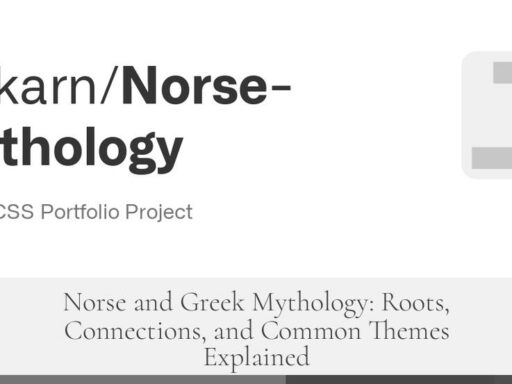In 1950, the US Navy dropped bacteria deemed “harmless” over San Francisco during a secret biodefense experiment to study biological weapon effects. Despite the label, the bacteria caused infections in at least 11 people and resulted in one death. At that time, the military’s understanding of bacteria’s risks in real-world urban settings was incomplete, so they believed these bacteria posed minimal threat. This experiment reflected the era’s fears about biological warfare during the Korean War and prioritized national security over ethical concerns.
The early 1950s marked intense military anxiety about unconventional weapons. The Korean War had begun the year before, and US military leaders feared an escalation to World War III. Biological weapons were particularly concerning because their effectiveness and risks in open environments remained poorly understood. Unlike chemical or nuclear weapons, whose effects seemed clearer, biological agents had unpredictable behaviors in cities or battlefields.
This uncertainty drove the decision to conduct field tests like the San Francisco release. The goal was to gain vital data on how organisms spread and whether biological weapons could be deployed effectively or defended against. Officials viewed these tests as essential for survival in future conflicts, possibly preventing catastrophic outcomes. Given the stakes, they considered a very low infection risk acceptable.
- The bacteria used were considered “harmless” based on scientific knowledge of the period.
- The military assumed infections would be rare or non-existent in healthy populations.
- However, at least 11 people contracted infections, and one fatality occurred.
This outcome revealed limitations in the period’s scientific understanding. The term “harmless” did not fully account for vulnerable individuals or environmental factors that enabled infection. Knowledge about how bacteria behaved outside labs was minimal. The military’s calculus underestimated the dangers posed by even non-pathogenic strains when dispersed broadly in urban areas.
Secrecy enveloped the experiment. It was not peer-reviewed or publicly disclosed until decades later. Only a small circle within the military was aware, reducing scrutiny. Decisions were driven primarily by utilitarian ethics prioritizing national security. The calculation was that exposing hundreds of thousands of people to minor risk could be justified if it potentially saved millions in wartime.
This rationale does not adhere to modern ethical standards, especially those inspired by the Nuremberg trials, which emphasize informed consent and individual rights over utilitarian cost-benefit. At the time, such frameworks were not strongly applied within military programs. The public was neither informed nor consenting, heightening ethical concerns.
| Aspect | 1950 Perspective | Modern Understanding |
|---|---|---|
| Risk of “Harmless” Bacteria | Considered negligible | Recognized as capable of causing serious infection |
| Ethics | Utilitarian trade-off of minimal public risk vs. defense knowledge | Requires informed consent and denies experiments without it |
| Oversight | Minimal, internal military only | Subject to rigorous external review and transparency |
The hierarchy and breadth of political oversight remain unclear. High-level civilian officials may not have been fully briefed or involved. Such military operations were often conducted under “operational” secrecy without broader approval. This limited external risk assessment or ethical validation.
In retrospect, the experiment’s justification is debatable. While it produced data that might help defense preparations, it also exposed civilians to unforeseen harm. Determining whether the benefits outweighed the harm is difficult because the knowledge gained cannot be proven to have saved lives. Using utilitarian logic post hoc is inherently flawed.
Scientific knowledge has significantly advanced since 1950. It is now understood that even bacteria thought harmless can cause severe infections, especially in vulnerable people. Modern biodefense and medical ethics demand transparency, peer review, and informed consent. The San Francisco experiment is studied as a cautionary example of secret military testing compromising public safety and ethics.
- 1950s military anxiety about biological weapons motivated secret tests.
- The bacteria used were considered low-risk but caused real infections and one death.
- Scientific understanding of bacterial risks in city environments was limited.
- The experiment lacked ethical oversight and public consent.
- Utilitarian priorities overshadowed individual safety under national security goals.
- Modern standards reject non-consensual exposure to pathogens and emphasize transparency.
- The experiment serves as a historical lesson on the balance of risk, ethics, and defense.
The 1950 US Navy “Harmless” Bacteria Experiment Over San Francisco: Was It Really Harmless?
In 1950, the US Navy dropped what they called “harmless” bacteria across San Francisco in a secret biodefense experiment. At least 11 people were infected, and one person died. Today, it’s well-known that even “harmless” bacteria can cause serious infections under the right circumstances. But back then, was this really understood, or was it wishful thinking by a paranoid military? Let’s unpack this little-known episode and see what lessons it teaches about risk, ethics, and military secrecy.
First off, the historical context is crucial. Imagine the fall of 1950—Korean War was in full swing, and the world was jittery over the possibility that this conflict might spiral into World War III. The US military brimmed with paranoia, especially about biological weapons because, unlike chemical or nuclear weapons, they simply didn’t have a firm grasp on how biological agents would behave in real-world conditions like cities or battlefields.
They knew a lot about chemical and nuclear arms. Radiological warfare? They figured it probably wouldn’t matter much. But biological weapons? That was a mysterious territory. How would these weapons spread? How deadly would they be outside labs? This uncertainty pressed the military to do “field testing.” Enter the San Francisco experiment.
Why San Francisco, and What Happened?
The US Navy released harmless bacteria to simulate a biological attack and study its spread through a large urban environment. They chose bacteria believed at the time to be non-pathogenic—essentially “safe.” But “safe” bacteria isn’t always safe, especially when introduced to thousands of unsuspecting people.
The result? Eleven documented infections and one person’s unfortunate death. People got sick from what was supposed to be harmless. This raises a big question: Did researchers truly believe the bacteria posed no genuine threat? Or was there just a massive underestimation of risk?
What Did They Really Know About “Harmless” Bacteria in 1950?
The truth is, “harmless” bacteria were poorly understood in the context of large-scale environmental exposure. The military’s concern was mainly about gaining practical data—how bacteria would disperse, where they’d land, and how to defend against such attacks—not about the subtle medical dangers those bacteria might pose.
Back then, the science of microbial pathogenicity was nowhere near as advanced as today. The military experts involved likely relied on limited research that generally occurred in controlled lab settings, not open-air cities teeming with vulnerable populations like the elderly, young children, or immunocompromised individuals.
They had to gamble. If the knowledge gained could save millions in a hypothetical World War III, they reasoned, then a handful of infections might be an acceptable sacrifice. This utilitarian logic allowed the experiment to proceed despite the moral quandaries.
The Ethics of Secrecy and Experimentation
Here’s where things get sticky. The military conducted this field test without informing the public or obtaining individual consent. The whole thing was classified, known only by a tiny circle of military insiders and a few government medical experts. No peer review, no public debates. Just a shadowy decision by the brass, prioritizing national security above all else.
Anyone today with a sense of medical ethics and human rights will raise an eyebrow—if not outright protest. After all, Nuremberg Trial principles clearly reject human experimentation without informed consent. Yet, in 1950, the military viewed things through a different lens: the survival of the nation above individual rights.
Imagine, exposing roughly 800,000 San Franciscans unknowingly to bacteria, playing a numbers game with people’s health. “One death out of hundreds of thousands is a tiny risk,” was the argument. But isn’t the failure to inform and protect an entire city a glaring ethical failure?
Oversight—Or Lack Thereof
Who signed off on this? It’s unclear. Military bureaucracy at that time often operated with limited oversight, especially on “operational” secret projects like this one. It’s possible the Secretary of Defense or Navy knew, maybe even higher-ups like the Joint Chiefs. But whether the President or civilian government had full knowledge remains murky.
The evaluation was internal. Trusted military scientists and advisors judged the risks. That sounds comforting until you remember risk evaluations within government agencies frequently underestimate downsides, especially when national security is at stake.
Could They Have Known the Risks Were Real?
Clearly, they underestimated them. Today, medical science knows that many bacteria labeled “harmless” can cause infections if introduced in sufficient quantity or into vulnerable hosts. The fact eleven people became ill and one died is proof enough.
Back then, it’s likely the military either didn’t appreciate this or consciously chose to play down concerns. After all, the Korean War had the whole country on edge, and any scientific data on biological dispersal seemed too valuable to pass up.
Reflections and Lessons for Today
Looking back, the San Francisco experiment is a cautionary tale of science, ethics, and national security colliding with disturbing consequences. It reveals how limited understanding paired with military paranoia can lead to risky, secret experiments on civilian populations.
Even “harmless” microbes aren’t harmless all the time. Context matters: immune status, exposure amount, and the environment play decisive roles in infections. The episode also shows how secrecy and lack of transparency can erode public trust—a crucial ingredient in times of crisis.
Practical Tips: What Can We Learn Now?
- Transparency saves lives: If a government plans experiments affecting civilians, full disclosure and consent must be non-negotiable.
- Risk assessments must evolve: Always remember that scientific knowledge is provisional. What seems harmless today might be dangerous tomorrow.
- Ethics over expediency: Whether war or peace, dismantling individual rights in the name of the greater good often backfires.
- Historical awareness matters: Learning episodes like this helps us insist on rigorous oversight and accountability for any government experiments.
Wrapping It Up: Was “Harmless” Really Harmless?
The short answer? No, it wasn’t truly harmless. The military’s definition of “harmless” bacteria was based on incomplete science and a risky utilitarian gamble. The resulting infections and death tragically proved that even “harmless” bacteria can turn serious under the right conditions, especially when dropped en masse on an unknowing population.
“If the knowledge you gain from the experiment has the chance of saving millions of lives… isn’t that worth it?” Maybe. But is it worth risking innocent lives and breaking ethical codes without consent? History leans against that argument.
This incident stands as a reminder to balance security with humanity—a lesson still relevant today amid new biological and technological challenges. After all, the price of ignorance or secrecy shouldn’t be paid with human lives.
Was it understood in 1950 that “harmless” bacteria could cause serious infections?
In 1950, knowledge about bacteria in open environments was limited. The military did not fully grasp how these agents would behave in cities, and the risks of infection were underestimated.
Why did the US Navy consider it safe to drop bacteria over San Francisco?
The decision was based on low perceived risks and urgent military needs. The experiment aimed to gather crucial defense data despite potential health risks to a small number of people.
How did the military justify the infection and death caused by the experiment?
They used a utilitarian approach, weighing the tiny risk against potential knowledge that could save many lives in wartime. Ethics were subordinate to national security priorities.
Were there ethical controls or public oversight on this experiment?
No public or peer review took place. Strict secrecy limited knowledge to a few military leaders and advisors, and oversight was minimal or absent.
Could the infection and death have been predicted based on scientific knowledge then?
The science was incomplete, and the risks were not fully understood. This lack of knowledge contributed to the tragic outcomes.
Did the Navy’s understanding of “harmless” bacteria differ from what we know today?
Yes, today it’s clear even benign bacteria can cause harm under some conditions. In 1950, this was less recognized, leading to underestimation of dangers.


